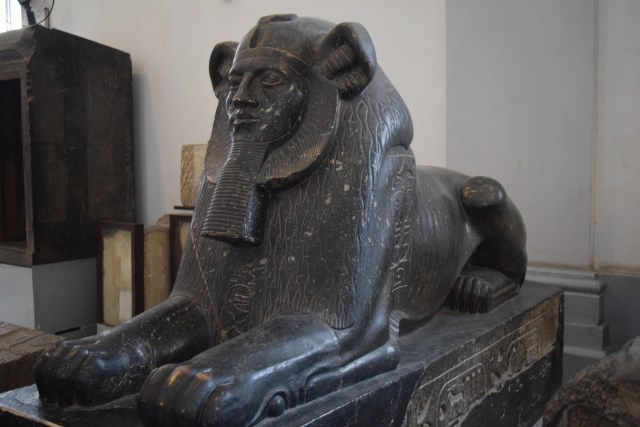If you are looking for something of a hidden gem while visiting Cairo, then we would suggest putting Bayt Al-Suhaymi on your list of places to visit. On our final day in Cairo, we made a last minute decision to book an “Islamic Cairo” tour through our hotel and we were certainly not disappointed. We saw several ancient mosques, but just as interesting was wandering the narrow streets of the Old City of Cairo. Just wandering the streets is quite exhilarating, but the highlight was taking a tour of an Ottoman era house that was built in 1648 and is in excellent condition as it was refurbished in 1997 as part of restoration project for the entire area.







To enter the Old City of Cairo, you go through the Conquest Gate (Bab el Fotouh), which is one of three remaining gates through the walls of the city. As we entered, we were joined by a tourism police officer to ensure our safety in the area, although we didn’t feel that it was particularly needed. We passed by several shops and restaurants on the busy streets with many children on their way home from school. Shortly we arrived at Bayt Al-Suhaymi or House of Suhaymi in order to tour the building that is one of the first Ottoman houses built in Cairo. At the center of the house there is a courtyard called a sahn that features a small garden and some trees. Looking over the courtyard is one of the many beautiful mashrabiya windows that we saw during our tour of the Old City of Cairo.







We were able to walk through many of the rooms as we worked our way up through the several floors of the building. Some of the rooms had traditional furniture still inside of them and there was even a sauna in the house that has a colorful ceiling with geometric designs. The house also featured an area in the back with a mill for grinding grain. The architecture is truly what is fascinating when you visit the house. From stained glass windows, many chandeliers, and colorful tile work, it is well worth visiting.







After leaving the Bayt Al-Suhaymi, we continued on to the Sultan Qalawun Complex, which features more amazing architecture. Afterwards, we wandered through the Khan El Khalili Bazaar, which can be quite crowded as locals and tourists flock to purchase crafts and items in stalls on the narrow streets. The sights, sounds, and aromas can be overwhelming, so take your time to fully absorb everything that you see around you. There are many tours that feature going to the bazaar, but we found the historic Ottoman home to be something very special that few people get to visit.










































